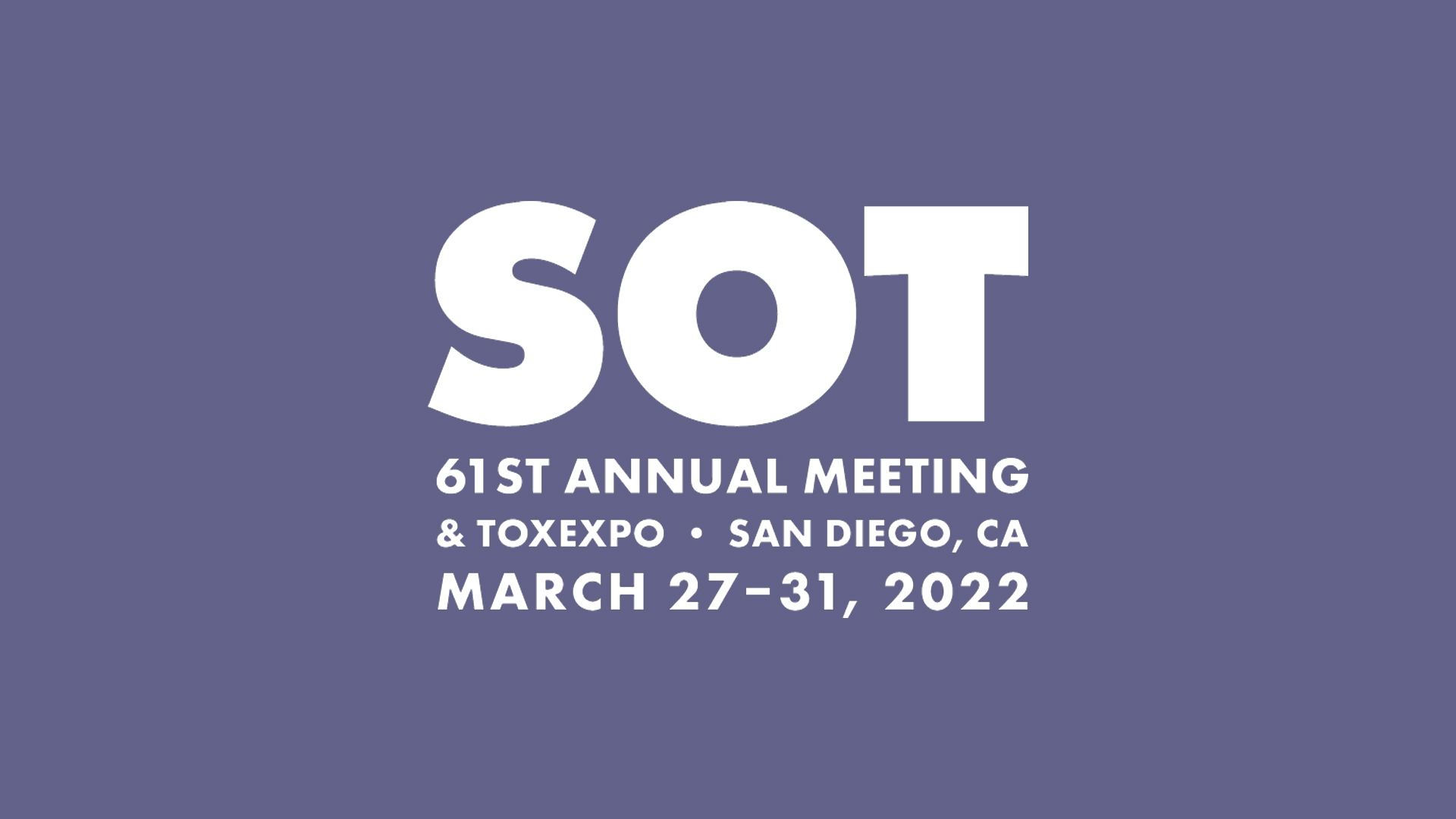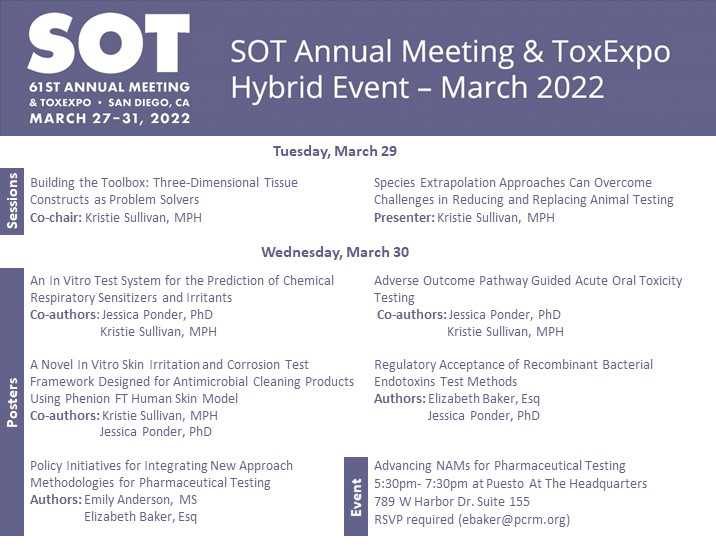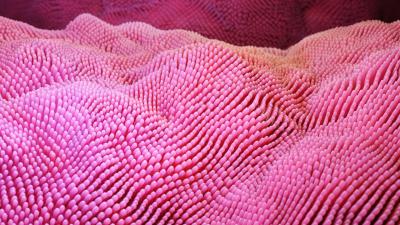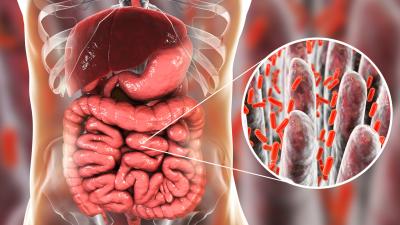Physicians Committee Scientists to Present at 2022 Society of Toxicology Meeting

Physicians Committee scientists and policy experts will be among the largest gathering of toxicologists at this year’s hybrid Society of Toxicology meeting. Members of the PCRM team, along with researchers, academics, and industry representatives will all meet to discuss the latest innovations and contributions of the field, and PCRM will ensure that the most human relevant, nonanimal approaches are highlighted.
Session: Building the Toolbox: Three-Dimensional Tissue Constructs as Problem Solvers
Tuesday, March 29, 8:00am - 10:45am (Pacific), CC Ballroom 6F
Chairs:
Erin Hill, Institute for In Vitro Sciences Inc.
Kristie Sullivan, Physicians Committee for Responsible Medicine
Presenters:
Erin Hill, Institute for In Vitro Sciences Inc.
Building the Toolbox: Three-Dimensional Tissue Constructs as Problem Solvers
Allison Hilberer, Institute for In Vitro Sciences Inc.
Enlightened: How Reconstructed Human EpiDermis (RhE) Models Are Used to Address Photosafety
Stefan Pfuhler, Procter & Gamble
Development, Standardization, and Validation of the Reconstructed Human Skin Micronucleus and Comet Assays
Cynthia Ryan, ToxTech Solutions LLC
Use of a Three-Dimensional Model in the SENS-IS Assay for Skin Sensitization Testing of Challenging Materials
Arno Gutleb, Luxembourg Institute of Science and Technology
Improved Respiratory Sensitization and Inflammation Assessment with a Three-Dimensional Co-Culture Model
Shaun McCullough, US EPA
A Data-Driven Assessment of the Need for Harmonization as a Path Forward for Increasing Confidence in In Vitro Air-Liquid Interface Systems for Chemical Testing
The advent of three-dimensional reconstructed human tissues for use in toxicology testing started in the late 1980s. These early tissues, spinoffs of therapeutic technologies, began with models of human skin and eyes and now include models representing many organ types, such as liver, intestine, and various sections of the respiratory tract. These models have several advantages, including the cells’ ability to orient and communicate in a three-dimensional space, thus allowing them to create a more physiological matrix than what is observed in monolayer cell systems. Perhaps the greatest advantage of these models compared with submerged cell culture systems is their ability to be grown at the physiologically relevant interface, allowing tissues normally exposed to air, such as lung and skin cells, to be grown at the air-liquid interface (ALI). The ALI allows compounds, either single chemicals or mixtures, to be applied directly to the surface of the organ model. Direct application of materials resolves solubility limitations inherent in many submerged cell culture systems and more closely mimics human exposure to chemicals and products. As tissue engineering companies began to manufacture and ship these models, researchers benefited from the availability of standardized test systems complete with Quality Assurance statements shipped directly to their laboratories. A testimony to their usefulness can be seen in that several commercially available models have been incorporated into the Organisation for Economic Co-operation and Development (OECD) Test Guidelines program for use in classification and labeling for hazards associated with eye and skin irritation and corrosion. Furthermore, “open-source” tissue models can address challenges with cost and availability of commercially available tissue models for certain regions or applications, and tissue growth and performance standards need to be developed. This session will use recent methodological or regulatory advances to demonstrate the advantages of reconstructed human tissues beyond tissue damage, often overcoming issues with monolayer or submerged cell culture systems. Case studies in the area of phototoxicity, genotoxicity, skin sensitization, and respiratory sensitization and toxicity will be presented. The session will conclude with a discussion of how to speed the evaluation and implementation of reconstructed human tissue models, including considerations related to the use of data from “open-source” models by regulatory agencies.
Presentation: Species Extrapolation Approaches Can Overcome Challenges in Reducing and Replacing Animal Testing
Kristie Sullivan, Physicians Committee for Responsible Medicine
Roundtable Session: Cross-Species Extrapolation: Opportunities in a 21st-Century Regulatory Nonanimal Testing World
Tuesday, March 29, 11:20am - 11:25am (Pacific), CC Ballroom 6B
The increasing development and application of molecular and in silico tools to aid in the assessment of chemicals for impacts on human and environmental health present opportunities for data-driven extrapolation of mechanisms of toxicity across species. These tools can also increase information about the relevance of predicted or observed adverse effects to specific species, highlight gaps in available information, or identify potentially sensitive species to specific effects. Species-specific data requirements can vary across regions, as can the acceptance of New Approach Methodologies. Both considerations can result in more animal testing than would otherwise be required. However, wider application of species-extrapolation concepts and tools could help address divergent data requirements as well as overcome several barriers to the implementation of NAMs by, for example, expanding the application of a new approaches to multiple species, thereby decreasing the overall cost and effort of validating multiple approaches. With the help of Adverse Outcome Pathways and Networks, species extrapolation tools could facilitate our understanding of the relevance of NAMs to species of interest. This presentation will suggest several recommendations to improve AOP development and increase the regulatory acceptance of species extrapolation tools, with the aim of inspiring discussion and shared priorities for further action.
Posters
An In Vitro Test System for the Prediction of Chemical Respiratory Sensitizers and Irritants
S. Burla1, A. Chary1, P. Weber1, M. Saibene1, T. Serchi1, Jessica Ponder2, Kristie Sullivan2, and A. C. Gutleb1. 1Luxembourg Institute of Science and Technology, Esch-sur-Alzette, Luxembourg; and 2Physicians Committee for Responsible Medicine, Washington, DC.
Poster Session: Respiratory Toxicology
Monday, March 28, 9:00am - 10:45am (Pacific), CC Exhibit Hall (Hall B)
Abstract: The prevalence of respiratory allergic diseases caused by chemicals increased in the last decades, resulting in high morbidity and mortality. Chemical respiratory sensitizers should be correctly classified and labelled to ensure the hazard is communicated and allow the safe handling and use. The immunological mechanisms underlying the development of chemical respiratory sensitization are not fully understood, and the available validated methods for identification of skin sensitizers fail to distinguish respiratory from skin sensitizers. Therefore, dedicated test systems representative for the respiratory tract are required to predict the sensitizing potential of a chemical. We evaluated the capacity of a 3D alveolar in vitro test system for the prediction of sensitization. The test system is built on microporous membrane inserts using the epithelial-A549, endothelial-EA.hy926 and monocytic-THP-1 cell lines. The test system allows exposure at the air-liquid-interface (ALI), and the development of a tissue-like microenvironment by cell-to-cell direct communication and indirectly through secreted messenger molecules. A panel of test items comprising sensitizing chemicals (e.g. chloramine-T trihydrate, ethylenediamine, piperazine, glutaraldehyde, ammonium hexachloroplatinate, maleic anhydride) and irritants (e.g. formaldehyde, glyoxal, salicylic acid, sodium dodecyl sulfate) was used to evaluate the performance of the test system to discriminate sensitizers from non-sensitizers. Cell viability was evaluated as a measure of metabolic activity in the resazurin assay 24h after exposure at ALI, and the dose-response curves were modelled for the apical, basolateral compartments, and the complete test system. The test system was then exposed to a dose leading to a cell viability of at least 75% and the expression of CD54, CD86 and TSLPr cell surface markers was measured by flow cytometry. The obtained data show that the test system can discriminate respiratory sensitizers from irritants. Moreover, the tested pro-haptens, ethylenediamine and piperazine, were correctly identified as respiratory sensitizers, chemicals reported as false negatives by other new approach methodologies for respiratory sensitization evaluation.
A Novel In Vitro Skin Irritation and Corrosion Test Framework Designed for Antimicrobial Cleaning Products Using Phenion FT Human Skin Model
K. E. Page1, K. Sullivan2, J. Ponder2, and W. Westerink3. 1The Clorox Company, Pleasanton, CA; 2Physicians Committee for Responsible Medicine, Washington, DC; and 3Charles River, Den Bosch, Netherlands.
Poster Session: Alternatives to Mammalian Models II
Wednesday, March 30, 9:00am - 10:45am (Pacific), CC Exhibit Hall (Hall B)
Abstract: Efforts to modernize the assessment of dermal irritation and corrosion may require solutions targeted to the types of chemicals being assessed. There are significant structural differences between rabbit and human skin which may explain why the rabbit test can be over-predictive of the human irritation response. Furthermore, recent analyses indicate the rabbit test shows substantial variability, especially for EPA class II and III compounds. Therefore evaluation of models used to assess skin irritation and corrosion must also take the limitations of the rabbit test into account. Models using human cells are preferable as they mimic the structure and function of human skin. Here we present the use of human-derived 3D tissue models (including Phenion™ FT) to assess the skin irritation hazard potential of antimicrobial finished product formulations. For these formulations, we find the EpiDerm™ model using the OECD test guideline (TG) 439 is over-predictive of the rabbit test results; therefore, overpredicting of an over-predicter for these formulations. An adjusted method with EpiDerm™ using a shorter exposure time than prescribed in OECD 439 aligns more closely with expectations for non-irritants, but still classifies irritants as more irritating than expected, when compared to animal data. Utilizing the Phenion™ FT model we see better parity to expected irritation potential. Using the OECD TG 431 for dermal corrosion, the EpiDerm™ model according to the guideline is still over predictive, whereas the Phenion™ FT model appears to be under predictive of expected human response to the tested formulations. Our results provide evidence that these models are likely more predictive of human response than the rabbit test and provide encouraging evidence that both models can be used to support dermal irritation and corrosion assessment of antimicrobial formulations in humans, providing confidence of consumer protection and avoidance of animal testing.
Policy Initiatives for Integrating New Approach Methodologies for Pharmaceutical Testing
Emily Anderson, and Elizabeth Baker, Physicians Committee for Responsible Medicine
Poster Session: Regulation/Policy
Wednesday, March 30, 9:00am - 10:45am (Pacific), CC Exhibit Hall (Hall B)
Abstract: New approach methodologies (NAMs) that utilize human cells and tissues are expected to better protect human health than traditional nonhuman animal-based approaches by providing toxicity information that more accurately predicts human health outcomes. Drug development stakeholders, regulators, and Congress have expressed the desire for improved NAM integration to achieve scientific benefits and address ethical concerns. Policy change that provides regulatory certainty around NAM acceptance will play a crucial role in NAM integration. The current policies outlining drug testing requirements and expectations that require animal testing must be changed to explicitly allow for NAM use. Otherwise, animal experiments will continue because traditional animal studies are otherwise ingrained in regulatory policy and industry practice. FDA’s Innovative Science and Technology Approaches for New Drugs (ISTAND) pilot program provides a pathway for regulatory certainty for qualified methods. Methods qualified via ISTAND can be included in regulatory submissions for the qualified context of use without the need for FDA to reconsider and reconfirm its suitability. Opportunities remain for updating the regulatory framework, as many regulations require nonclinical animal data and many Guidance recommend animal studies. To account for evolving NAM development, regulatory language should be changed, with references to animal data removed. Guidance should reflect flexibility for NAM use, with contradictory language removed.
Adverse Outcome Pathway Guided Acute Oral Toxicity Testing
Mark Nelms1, S. W. Edwards1, V. Hench1, Jessica Ponder2, and Kristie Sullivan2. 1RTI International, Durham, NC; and 2Physicians Committee for Responsible Medicine, Washington, DC.
Poster Session: Computational Toxicology II
Wednesday, March 30, 10:45am - 12:30pm (Pacific), CC Exhibit Hall (Hall B)
Abstract: Adverse outcome pathways can facilitate tiered testing strategies for acute oral toxicity testing by providing a mechanistic framework to identify the appropriate non-animal methods and connect them to apical adverse outcomes. This study used chemical structure and bioactivity measurements to improve confidence in pre-existing in silico approaches and identify in vitro assays for tiered testing strategies to define acutely toxic chemicals. We performed a comprehensive analysis of 11,992 chemicals with curated acute toxicity information from the ICCVAM Acute Toxicity Work Group (ATWG). Chemicals were segregated into 2,192 clusters based on shared structural characteristics defined by ToxPrint fingerprints. ToxCast assays, where activity was enriched for chemicals within a cluster, were used to identify the minimum number of assays needed to detect all acutely toxic chemicals. Of the 1,627 acutely toxic chemicals (rat oral LD50 <= 2,000 mg/kg as defined by the ATWG) with activity in ToxCast below the range of cytotoxicity, 1,139 were linked to one or more structure-guided ToxCast assays. While 300 assays were required to detect all acutely toxic chemicals with false discovery rate of 3%, selecting assays based on a chemical’s structural cluster means that no single chemical requires more than four assays and 98% require two assays or less. Cluster-specific ToxCast activity was significantly associated with both the binary ATWG toxicity classification (p-value = 2.2 x 10-16) and the five United Nations Globally Harmonized System (GHS) categories for acute oral toxicity (estimated p-value = 5 x 10-4). The structural clusters alone were significantly associated with GHS categories (estimated p-value = 5 x 10-5) as well. Further evaluation of the assays associated with chemical clusters enriched for acutely toxic chemicals confirmed that assay performance is improved when the assay is directly linked to the mechanism of toxicity though several assays with indirect links to the toxicity mechanism showed good performance. This study also confirmed previous observations that cytotoxicity can predict acute toxicity. Our results suggest that a combination of in silico approaches, such as the Collaborative Acute Toxicity Modeling Suite (CATMoS), and bioactivity information guided by chemical structure and toxicological mechanism represents an efficient tiered testing strategy sufficient to reduce or eliminate animal testing for acute oral toxicity.
Regulatory Acceptance of Recombinant Bacterial Endotoxins Test Methods
Elizabeth Baker, and Jessica Ponder. Physicians Committee for Responsible Medicine, Washington, DC.,
Poster Session: Safety Assessment: Pharmaceutical-Drug Development II
Wednesday, March 30, 2:30pm - 4:15pm (Pacific), CC Exhibit Hall (Hall B)
Abstract: In recent years, there has been significant progress toward the adoption of non-animal pyrogen and Bacterial Endotoxins Test (BET) methods that can provide equal or better assurance that injected and intravenous therapies are safe for use, which is exceedingly important in the face of the ongoing pandemic. The BET method that has been used for many years utilizes amoebocyte lysate extracted from horseshoe crab blood, which features an evolutionarily unique clotting cascade in the presence of endotoxin. More than twenty years ago, the cascade-initiating enzyme Factor C, an endotoxin-sensitive intracellular serine protease, was sequenced. Today, there are three market suppliers of nonanimal BET assays that use recombinant horseshoe crab proteins. A literature review demonstrates that these synthetic assays are more specific and less variable than the blood-based test. As an additional benefit, recombinant protein production is rapidly scalable, unlike the blood-based test that relies on a keystone aquatic species that exists in limited coastal ranges. In Europe, recombinant Factor C tests are now accepted for BET without additional validation, as they have been adopted into the compendial pharmacopoeia. In contrast, the United States Pharmacopoeia (USP) has not adopted rFC as a compendial method. Despite this, the US Food and Drug Administration has already approved the release of multiple parenteral therapies tested solely with rFC. Sponsors are encouraged to submit results from recombinant BET methods with support from published literature on the comparability of recombinant methods. Ongoing efforts from global stakeholders seek compendial adoption of both rFC and recombinant Cascade Reagent methods.
Event: Advancing NAMs for Pharmaceutical Testing
Wednesday, March 30, 5:30pm- 7:30pm at Puesto At The Headquarters, 789 W Harbor Dr. Suite 155
Join Physicians Committee for Responsible Medicine for a hosted dinner on Wednesday, March 30, 2022
RSVP required (contact ebaker [at] pcrm.org (Elizabeth Baker))








